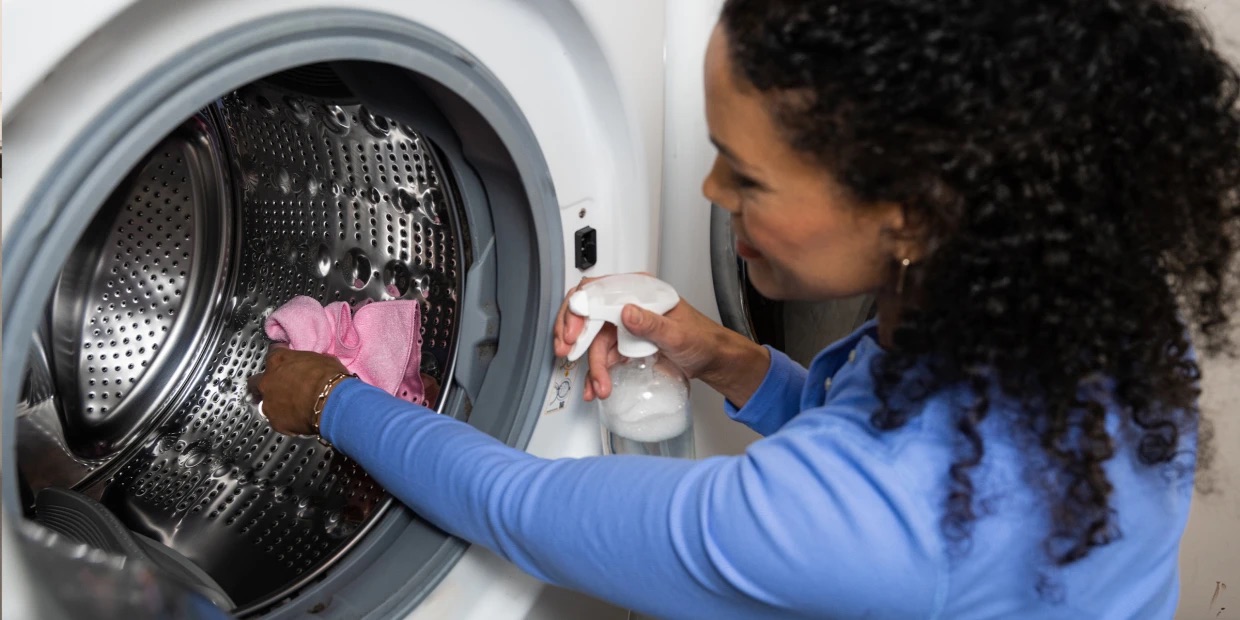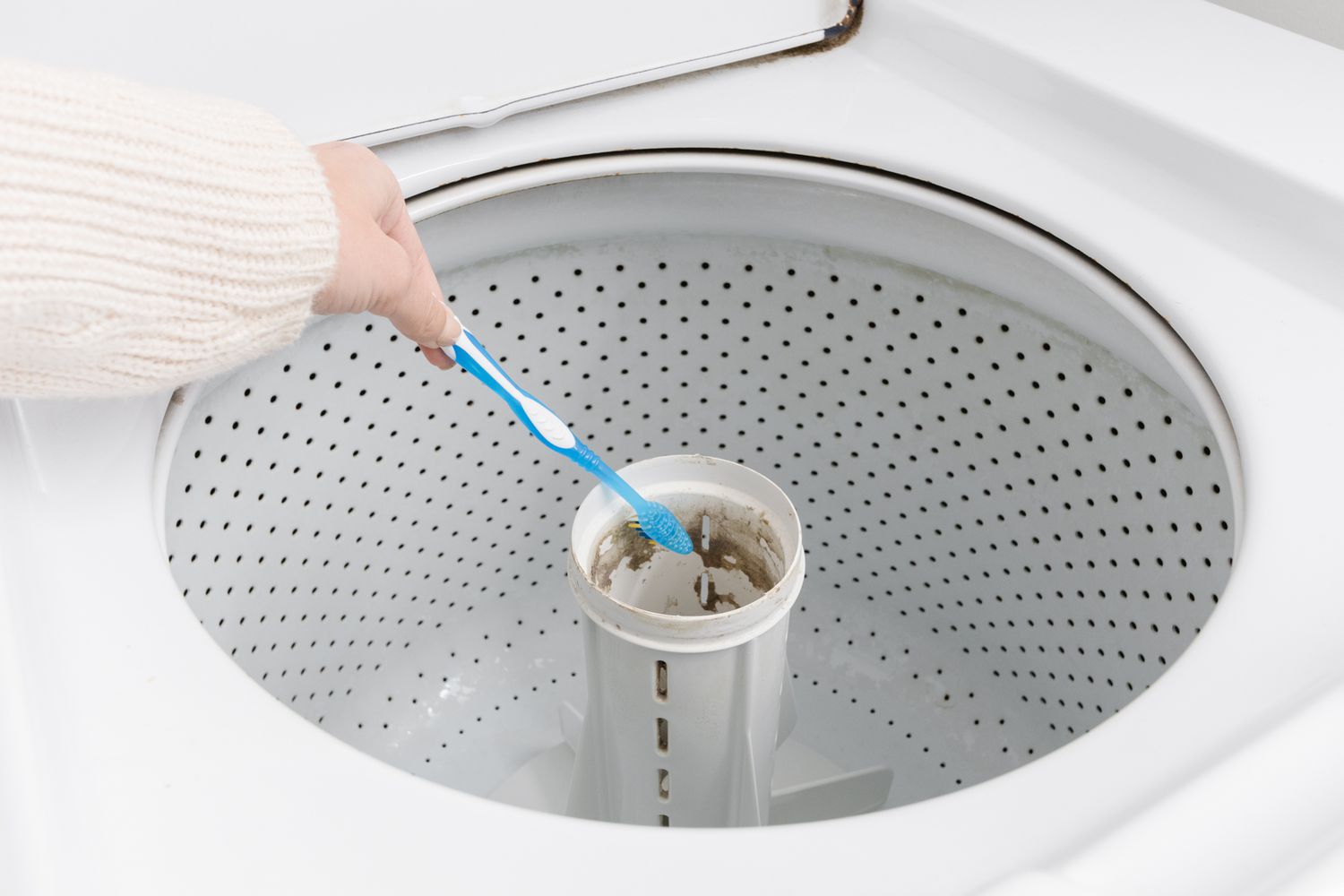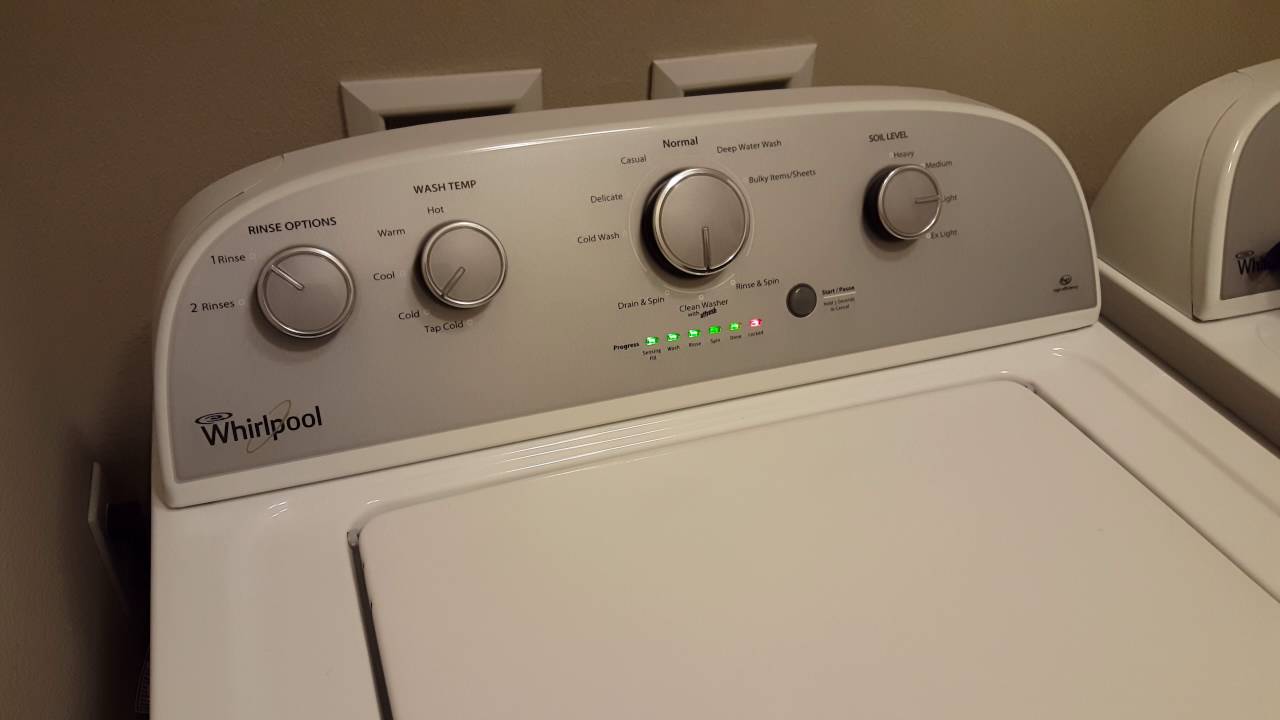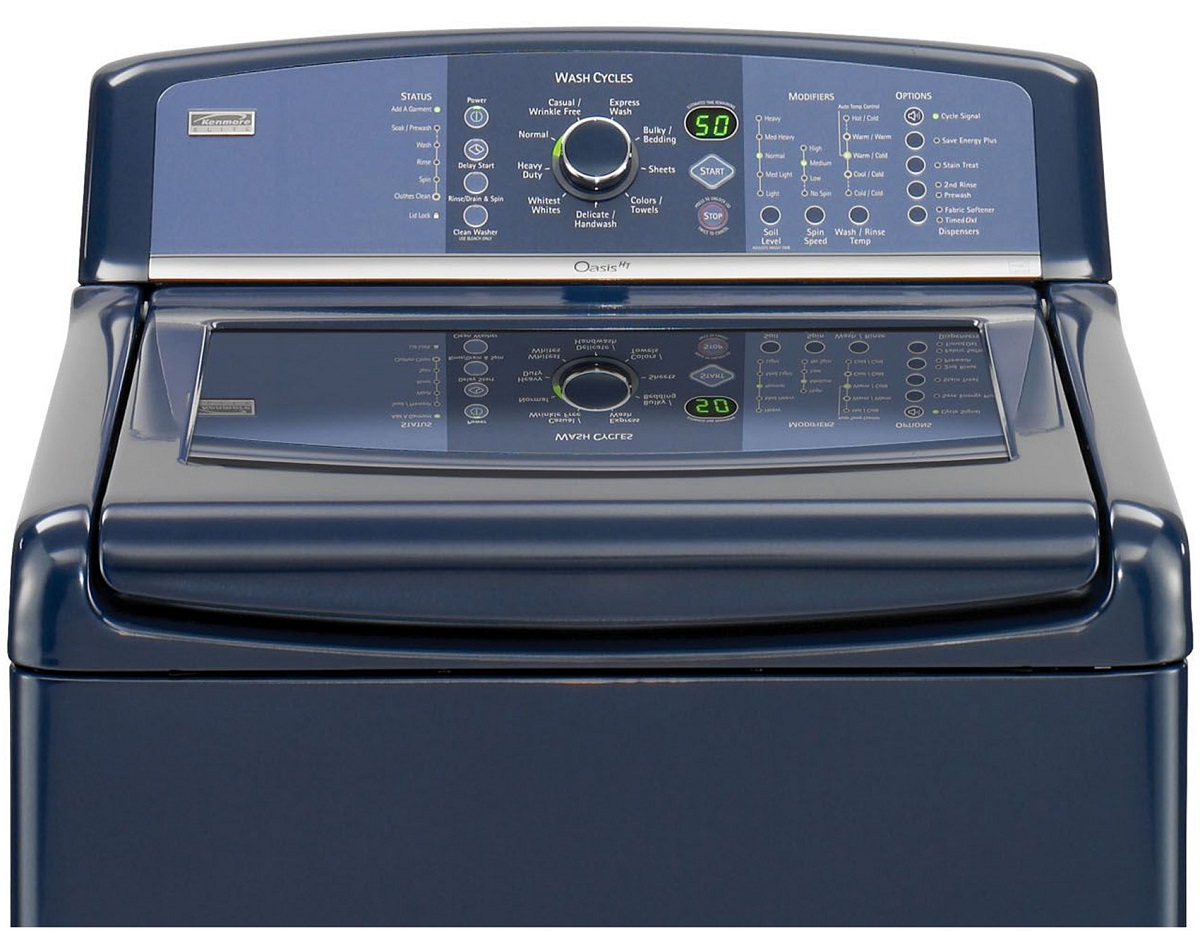Home>Home Appliances>Laundry Appliances>How To Wash Wool In A Washing Machine


Laundry Appliances
How To Wash Wool In A Washing Machine
Published: February 22, 2024
Learn how to safely wash wool in a washing machine with our expert tips. Discover the best laundry appliances for delicate fabrics. Keep your wool garments looking fresh and new!
(Many of the links in this article redirect to a specific reviewed product. Your purchase of these products through affiliate links helps to generate commission for Storables.com, at no extra cost. Learn more)
Introduction
Wool is a timeless and versatile fabric that has been cherished for centuries due to its natural warmth, softness, and durability. Whether it's a cozy sweater, a stylish scarf, or a luxurious blanket, wool items are beloved for their comfort and elegance. While many people may be hesitant to wash wool in a machine, advancements in laundry technology and the availability of gentle detergents have made it possible to maintain the beauty and integrity of wool garments and accessories with ease.
In this comprehensive guide, we will delve into the art of washing wool in a washing machine, providing you with valuable insights and practical tips to ensure that your cherished wool items receive the care they deserve. From understanding the unique characteristics of wool fabric to selecting the appropriate washing machine settings and using the right detergent, we will walk you through the entire process, empowering you to confidently care for your woolen treasures.
By following the expert advice and best practices outlined in this guide, you can bid farewell to the anxiety of washing wool in a machine and embrace a simple, yet effective approach to preserving the quality and beauty of your beloved wool garments and accessories. So, let's embark on this wool-washing journey together and unlock the secrets to achieving clean, fresh, and impeccably cared-for wool items.
Key Takeaways:
- Embrace the art of washing wool in a machine by understanding its unique properties and using gentle settings to preserve its beauty and longevity. With the right preparation, detergent, and care, you can confidently care for your cherished wool items.
- After washing wool in a machine, gently dry and store the items to maintain their softness and shape. Lay them flat to dry, avoid direct heat, and store in breathable containers to ensure they remain fresh and elegant for years to come.
Understanding Wool Fabric
Wool is a natural fiber that is renowned for its exceptional properties, making it a popular choice for a wide range of clothing and household items. Derived from the fleece of sheep and other animals, wool is celebrated for its insulating capabilities, moisture-wicking properties, and inherent resilience. Understanding the unique characteristics of wool fabric is essential for effectively caring for and maintaining wool items, especially when it comes to washing them in a machine.
One of the most remarkable qualities of wool is its ability to regulate body temperature. This means that wool garments can keep you warm in cold weather while also providing breathability and comfort in milder conditions. Additionally, wool has a natural resistance to wrinkles, making it a practical choice for travel and everyday wear. Its elasticity allows wool to retain its shape, ensuring that garments maintain their form and drape over time.
Wool is also highly effective at wicking away moisture, making it an ideal choice for activewear and outdoor apparel. This moisture-wicking property helps to keep the wearer dry and comfortable by drawing perspiration away from the skin. Furthermore, wool possesses natural odor-resistant qualities, allowing it to stay fresh and wearable for extended periods without frequent washing.
When it comes to washing wool in a machine, it's important to recognize that wool fibers are more delicate and prone to felting and shrinkage compared to other fabrics. Therefore, special care must be taken to ensure that the washing process is gentle and tailored to the unique needs of wool. By understanding the inherent properties of wool fabric, you can approach the washing process with confidence, knowing that you are preserving the integrity and longevity of your cherished wool items.
In summary, wool fabric is a remarkable natural material that offers a multitude of benefits, from its insulating and moisture-wicking properties to its resilience and versatility. By gaining a deeper understanding of wool fabric, you can appreciate the unique qualities that make it a beloved choice for clothing and home textiles, and you can approach the task of washing wool in a machine with the knowledge and insight needed to ensure optimal care and maintenance.
Preparing Wool for Washing
Before embarking on the process of washing wool in a machine, it is crucial to prepare the wool items to ensure that they receive the utmost care and attention during the laundering process. Proper preparation not only safeguards the integrity of the wool fabric but also contributes to the overall effectiveness of the washing outcome. Here's a detailed look at the essential steps for preparing wool for washing:
-
Check the Care Label: Begin by carefully examining the care label attached to the wool item. The care label provides valuable information regarding the manufacturer's recommended washing instructions, including water temperature, agitation level, and any specific precautions to be observed. Adhering to the guidelines on the care label is fundamental in preserving the quality and appearance of the wool garment.
-
Inspect for Stains and Spots: Thoroughly inspect the wool item for any visible stains or spots. If stains are present, it is advisable to address them prior to washing. Spot-treating stains with a gentle stain remover or detergent can help prevent them from setting during the washing process. However, it is important to use caution and test the stain remover on a small, inconspicuous area of the garment to ensure compatibility with the wool fabric.
-
Secure Fastenings and Closures: Prior to washing, ensure that any zippers, buttons, or fastenings on the wool item are securely closed. This precaution prevents the risk of snagging or entanglement with other garments during the washing cycle, thereby safeguarding the overall condition of the wool item.
-
Turn Garments Inside Out: For wool clothing such as sweaters and tops, turning the garments inside out before washing can help minimize pilling and friction-related wear on the outer surface. This simple step can contribute to maintaining the smooth appearance and texture of the wool fabric.
-
Gently Shake or Brush: Lightly shaking or gently brushing the wool item can help remove surface debris, dust, and loose fibers before washing. This preliminary step reduces the likelihood of these particles becoming trapped in the fabric during the washing process, promoting a more thorough and effective cleaning outcome.
By diligently preparing wool items for washing, you set the stage for a successful laundering experience that prioritizes the preservation and care of the delicate wool fabric. These preparatory measures not only contribute to the overall cleanliness of the wool items but also play a pivotal role in upholding their longevity and visual appeal.
Selecting the Right Washing Machine Settings
When it comes to washing wool in a machine, selecting the appropriate washing machine settings is paramount to ensuring the gentle treatment and effective cleansing of wool items. The right combination of water temperature, agitation level, and cycle duration can significantly impact the outcome of the washing process, influencing factors such as shrinkage, felting, and overall garment integrity. Here's a detailed exploration of the key considerations for selecting the right washing machine settings for wool items:
Water Temperature:
Choosing the correct water temperature is crucial for washing wool effectively. Opting for cold water is generally recommended, as it helps prevent excessive agitation and minimizes the risk of wool fibers shrinking or becoming misshapen. Cold water is gentle on wool fabric and aids in preserving its natural properties, such as elasticity and softness. Additionally, using cold water reduces the likelihood of color bleeding or fading, safeguarding the vibrancy and integrity of colored wool items.
Agitation Level:
Selecting a washing machine setting with a gentle or delicate agitation cycle is essential for wool items. Aggressive agitation can cause wool fibers to interlock and felt, leading to a loss of softness and an undesirable change in texture. By opting for a low-agitation or wool-specific cycle, you can ensure that the wool items are treated with the utmost care, minimizing the risk of damage while facilitating thorough cleaning.
Cycle Duration:
When washing wool in a machine, it is advisable to opt for shorter cycle durations to minimize exposure to water and mechanical action. Wool items should be laundered for the shortest recommended time to prevent excessive stress on the fibers. Shorter cycles help maintain the structural integrity of the wool fabric while effectively removing dirt and impurities. Additionally, reducing the cycle duration contributes to energy efficiency and environmental sustainability, aligning with responsible laundry practices.
Specialized Wool Cycle:
Many modern washing machines offer specialized wool cycles designed specifically for washing wool items. These dedicated cycles are tailored to provide gentle agitation, precise water temperature control, and optimized cycle durations, ensuring that wool garments and accessories receive the meticulous care they require. Utilizing a specialized wool cycle can streamline the process of washing wool in a machine, offering convenience and peace of mind while upholding the quality of the wool items.
By carefully considering and selecting the right washing machine settings, you can embark on the wool-washing journey with confidence, knowing that your cherished wool items are in good hands. The thoughtful selection of water temperature, agitation level, cycle duration, and the utilization of specialized wool cycles are pivotal in safeguarding the beauty, softness, and longevity of wool garments and accessories. With the appropriate washing machine settings in place, you are poised to achieve clean, fresh, and impeccably cared-for wool items, elevating your laundering experience to new heights of effectiveness and ease.
Using the Proper Detergent
Selecting the right detergent is a critical aspect of washing wool in a machine. The choice of detergent significantly influences the cleaning efficacy, color retention, and overall care of wool items. When it comes to wool, it is essential to opt for a detergent specifically formulated for delicate fabrics, such as wool and silk. These detergents are designed to provide thorough cleansing while maintaining the integrity of the wool fibers.
Wool-specific detergents are formulated to be gentle on the natural structure of wool, ensuring that the fibers remain soft, supple, and free from damage. These detergents are often free from harsh chemicals, enzymes, and bleaching agents that can compromise the delicate nature of wool fabric. Additionally, they are pH-balanced to minimize the risk of alkaline or acidic residue, which can cause discoloration or degradation of wool fibers over time.
When using a wool-specific detergent, it is important to follow the manufacturer's instructions regarding the recommended dosage. Using the appropriate amount of detergent ensures effective cleaning while preventing residue buildup on the wool items. Excess detergent can be difficult to rinse out completely, potentially leaving a soapy residue that detracts from the natural softness and luster of the wool fabric.
Furthermore, it is advisable to avoid using fabric softeners or bleach when washing wool items. Fabric softeners can coat the wool fibers, diminishing their breathability and natural moisture-wicking properties. Similarly, bleach can cause irreversible damage to wool, leading to discoloration and weakening of the fabric structure. By adhering to the use of wool-specific detergents and refraining from harsh additives, you can uphold the pristine condition and longevity of your cherished wool garments and accessories.
In summary, using the proper detergent is a fundamental aspect of washing wool in a machine. By opting for wool-specific detergents and exercising caution with additives such as fabric softeners and bleach, you can ensure that your wool items receive the gentle yet effective cleansing they deserve. With the right detergent at your disposal, you are equipped to embark on the wool-washing process with confidence, knowing that you are prioritizing the care and maintenance of your beloved wool garments and accessories.
Read more: How To Store Wool
Washing Wool in the Machine
Washing wool in a machine requires a delicate and methodical approach to ensure that the natural properties and integrity of the wool fabric are preserved. With the preparatory steps completed and the appropriate washing machine settings selected, it is time to embark on the actual process of washing wool items. Here's a detailed guide on washing wool in a machine, encompassing the essential steps and considerations for achieving optimal results.
-
Load Wool Items Carefully: When placing wool items in the washing machine, it is important to avoid overcrowding the load. Overfilling the machine can lead to excessive friction and inadequate water circulation, compromising the effectiveness of the washing process. Arrange the wool items loosely in the machine, allowing ample space for water and detergent to permeate the fabric.
-
Utilize a Mesh Laundry Bag: For smaller wool items such as delicate accessories or lightweight garments, using a mesh laundry bag can provide an extra layer of protection during the washing cycle. The mesh bag helps prevent tangling and friction between items, reducing the risk of stretching or distortion while ensuring thorough cleaning.
-
Initiate the Washing Cycle: Once the wool items are loaded into the machine, initiate the selected washing cycle. Whether utilizing a specialized wool cycle or customizing the settings for a gentle, cold-water cycle, it is essential to monitor the progress of the washing process. Remain attentive to the duration of the cycle, ensuring that the exposure of the wool items to water and agitation is minimized.
-
Exercise Caution During Spinning: When the washing cycle nears completion, it is crucial to exercise caution during the spinning phase. High-speed spinning can exert excessive force on wool items, leading to stretching and distortion. Opt for a low-speed or delicate spin setting to minimize the impact on the wool fabric while effectively removing excess water.
-
Inspect and Reshape Post-Wash: Upon completion of the washing cycle, carefully remove the wool items from the machine and inspect them for any signs of damage or misshaping. Gently reshape the items, such as smoothing out wrinkles or repositioning sleeves, to restore their original form. This step is vital in preserving the aesthetic appeal and structure of the wool garments and accessories.
By following these meticulous steps and exercising attentiveness throughout the washing process, you can achieve clean, fresh, and impeccably cared-for wool items. The art of washing wool in a machine lies in the harmonious balance of thorough cleansing and gentle treatment, culminating in the preservation of the natural beauty and resilience of wool fabric. With a steadfast commitment to meticulous care and attention, washing wool in a machine becomes a seamless and rewarding endeavor, allowing you to enjoy the timeless elegance and comfort of your cherished wool items for years to come.
Drying and Storing Wool Items
After the meticulous process of washing wool items in a machine, the final steps of drying and storing are crucial in preserving the quality and longevity of the delicate wool fabric. Proper drying techniques and thoughtful storage practices contribute to maintaining the softness, shape, and overall integrity of wool garments and accessories.
Drying Wool Items
When it comes to drying wool items, it is essential to exercise patience and utilize gentle methods to prevent damage and distortion. Here are the key considerations for effectively drying wool:
-
Absorb Excess Moisture: After the washing cycle is complete, gently press the wool items between clean, dry towels to absorb excess moisture. Avoid wringing or twisting the wool fabric, as this can lead to stretching and misshaping.
-
Lay Flat to Dry: Lay the wool items flat on a clean, dry towel or a breathable mesh drying rack. Arrange the items in their natural shape, smoothing out any wrinkles or creases. This method allows the wool fabric to air dry evenly and maintain its original form.
-
Avoid Direct Sunlight and Heat: When drying wool, it is important to avoid direct sunlight and sources of heat, such as radiators or dryers. Excessive heat can cause the wool fibers to become brittle and lead to shrinkage. Opt for a well-ventilated, shaded area for gentle air drying.
-
Monitor the Drying Process: Periodically check the progress of the drying wool items, ensuring that they are drying evenly and maintaining their shape. Adjust the positioning of the items if necessary to promote uniform drying.
Storing Wool Items
Proper storage is essential for safeguarding wool items from potential damage and preserving their pristine condition. Here are the best practices for storing wool garments and accessories:
-
Clean Before Storage: Ensure that wool items are completely dry and free from any residual moisture before storing them. This prevents the risk of mildew or musty odors developing during storage.
-
Use Breathable Storage Containers: Opt for breathable storage containers or garment bags made from natural materials such as cotton or linen. Avoid plastic bags or airtight containers, as they can trap moisture and lead to mold or mildew formation.
-
Provide Adequate Air Circulation: Store wool items in a well-ventilated area to promote air circulation and prevent stagnation. This helps maintain the freshness and quality of the wool fabric over time.
-
Protect from Pests: Use natural pest deterrents such as cedar blocks or lavender sachets to safeguard wool items from potential moth damage. These natural repellents help preserve the integrity of wool fabric without the use of harsh chemicals.
By adhering to these meticulous drying and storing practices, you can ensure that your cherished wool garments and accessories remain in impeccable condition, ready to be enjoyed for years to come. The art of caring for wool extends beyond the washing process, encompassing thoughtful drying and storage methods that honor the timeless elegance and resilience of wool fabric.
Frequently Asked Questions about How To Wash Wool In A Washing Machine
Was this page helpful?
At Storables.com, we guarantee accurate and reliable information. Our content, validated by Expert Board Contributors, is crafted following stringent Editorial Policies. We're committed to providing you with well-researched, expert-backed insights for all your informational needs.














0 thoughts on “How To Wash Wool In A Washing Machine”